Reversible figures
(ambiguous figures or bistable figures)
since February 15, 2005
<Exhibited with creator's permission: September 27, 2010>
Moving reversible figure (lady's figure appears to rotate clockwise or counterclockwise) created by Nobuyuki Kayahara, Hiroshima/Tokyo, Japan
When the lady appears to rotate clockwise seen from above, the right leg as well as the right arm appear to be raised. On the other hand, when the lady appears to rotate counterclockwise seen from above, the left leg and the left arm appear to be raised.
For those who do not see this illusion well: "To see this illusion, scroll down until you only see only the foot
[in the top of your screen] and notice in what direction it is spinning
(either clockwise or anticlockwise). Then try to see it spin the other
direction by imagining how that would look while you are watching the foot
spin. This should be relatively easy, but may take a couple of seconds.
When you succeed seeing the foot rotating the other direction, scroll up
slowly and persist seeing the dancer rotating in the same direction as
the foot until she is fully visible. Now you have changed the perception
of the spinning direction! Practice a little bit more by repeating the
directions and reversing the spinning direction again." by Bruno Curfs, October 20, 2012
Download
(through Visiome)
(c) Nobuyuki Kayahara 2003

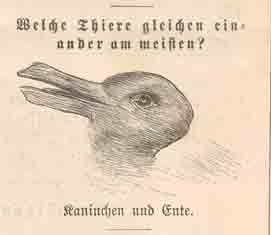
<Duck-rabbit figure>
There seems to be a rabbit facing right and a duck facing left.
This image is copied from one of Professor John F. Kihlstrom's pages, where he points out that the creater of this image was the American psychologist Joseph Jastrow*.
*Jastrow, J. (1899). The mind's eye. Popular Science Monthly, 54, 299-312.
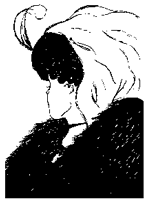
<My wife and mother-in-law>
Either of a young girl or an old woman ("wife" and "mother in law") appears.
This image is copied from mathworld.wolfram.com, which shows that this image was drawn by British cartoonist W. E. Hill in 1915 in Puck humor magazine, an American magazine inspired by the British magazine Punch. However, there had been such figures before him.
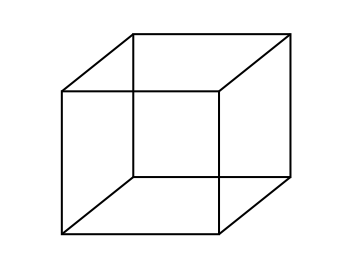
<Necker cube>
The image appears to be either of the two shown below.
by A.Kitaoka 2005 (February 15)
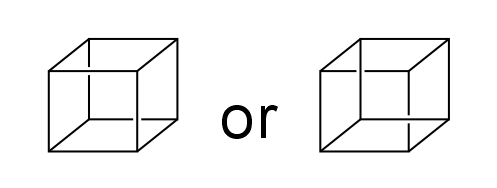
It is said that this image was developed in 1832 by the Swiss chrystallographer L. A. Necker.
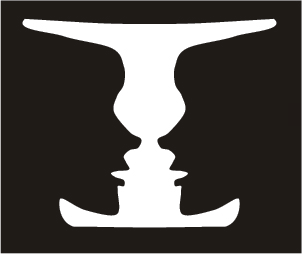
<Rubin's goblet (Rubin's vase; Rubin's vase-face illusion)>
(This image is poorly reproduced by me, so the shapes are different from the original)
The white goblet appears to be in front of the background or the two black profiles appear to be in front of the white background. This is the most famous image among Figure-ground reversible images.
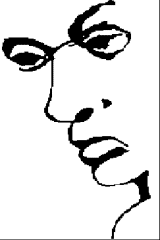
<Face and Liar>*
*I am not sure how the creator calls this image.
The word 'Liar' draws a face. It is said that Paul Agule produced this artwork in 1987.
This image is shown without permission to only manifest the name of the creator against extensive abuse on Internet without credits. I am seeking the creator's contact address. <May 24, 2011>
Block, J. R. and Yuker, H. (1989) Can You Believe Your Eyes? Gardner Press Inc. (published in 1991 Robson Books Ltd). <see p.212>
Special thanks to Misty!
Ambiguous (Reversible) figures 4 3 2 1